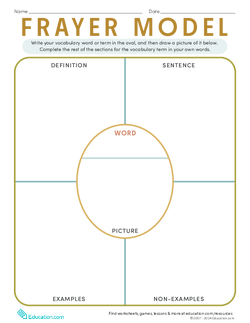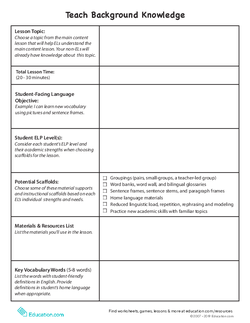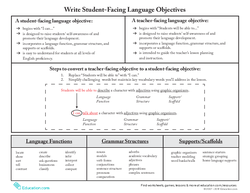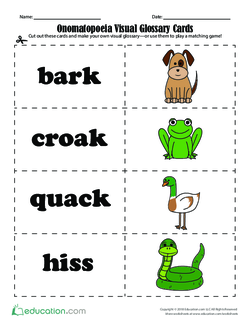- Worksheets
- Games
- Lesson Plans
- Workbooks
- Exercises
- Science Projects
- Skills Progression
- More
You are here:
Lesson Plan
An Introduction to Onomatopoeia
Use this lesson to help your ELs learn common English sound words. It can be a stand-alone lesson or used as support for the lesson Onomatopoeia Practice.
Grade
Subject
View aligned standards
Objectives
Academic
Students will understand the concept of onomatopeia and be able to use them in writing.
Language
Students will be able to identify onomatopoeia and differentiate between verbs and adjectives using sentence stems and a word bank.
Introduction
(2 minutes)- Play a short audio recording from the Onomatopoeia video linked in the Related Media section to demonstrate several common sounds (i.e., a cow mooing, a horn honking, buttons beeping). Explain that these are common sounds we hear every day.
- Tell students that there are words that imitate the sounds they describe. These "sound words" are called onomatopoeia. Write this key term as a heading on a piece of chart paper with the sub-heading "sound words."
- Play the audio recording a second time and, on the chart paper, write an onomatopoeia for each sound (i.e., "moo," "honk," "beep"). This is the start of a word bank that will be used throughout the lesson.
- Tell students that today they will be learning to identify onomatopoeia in texts.






